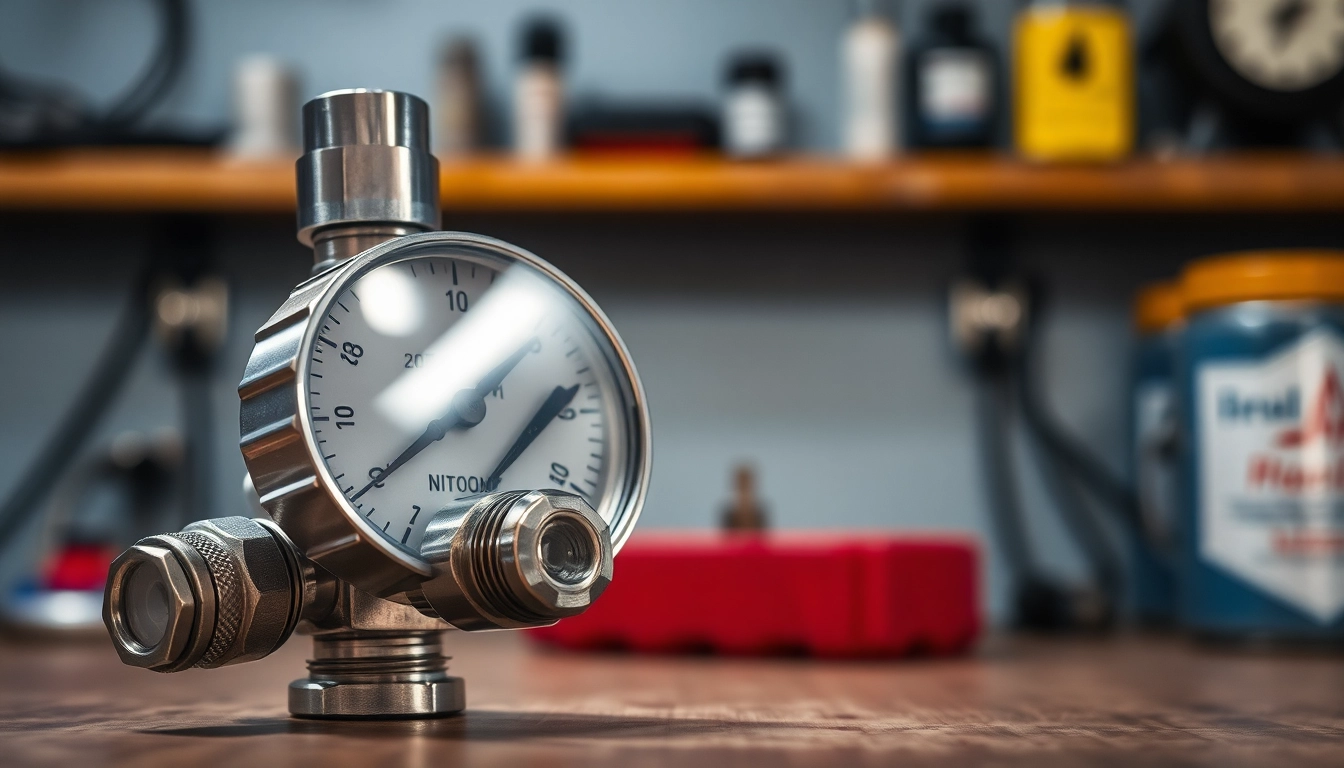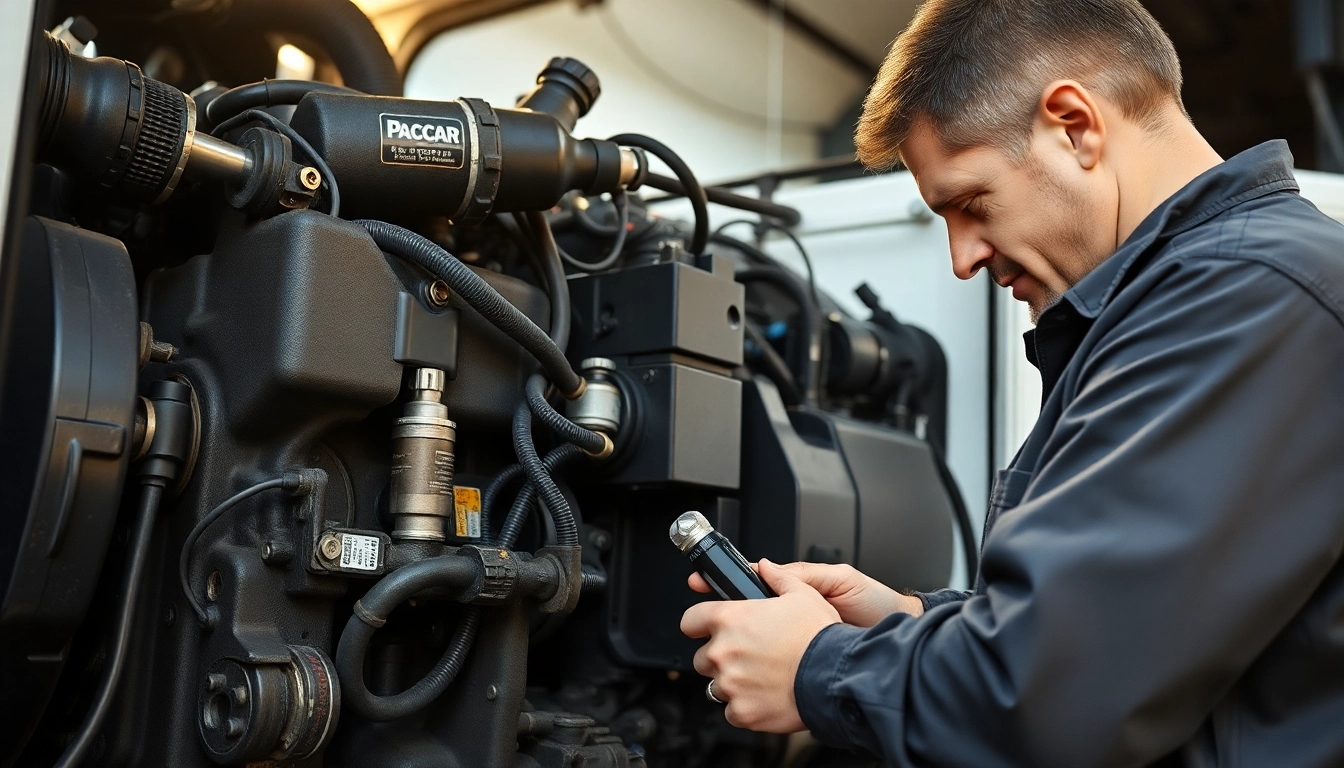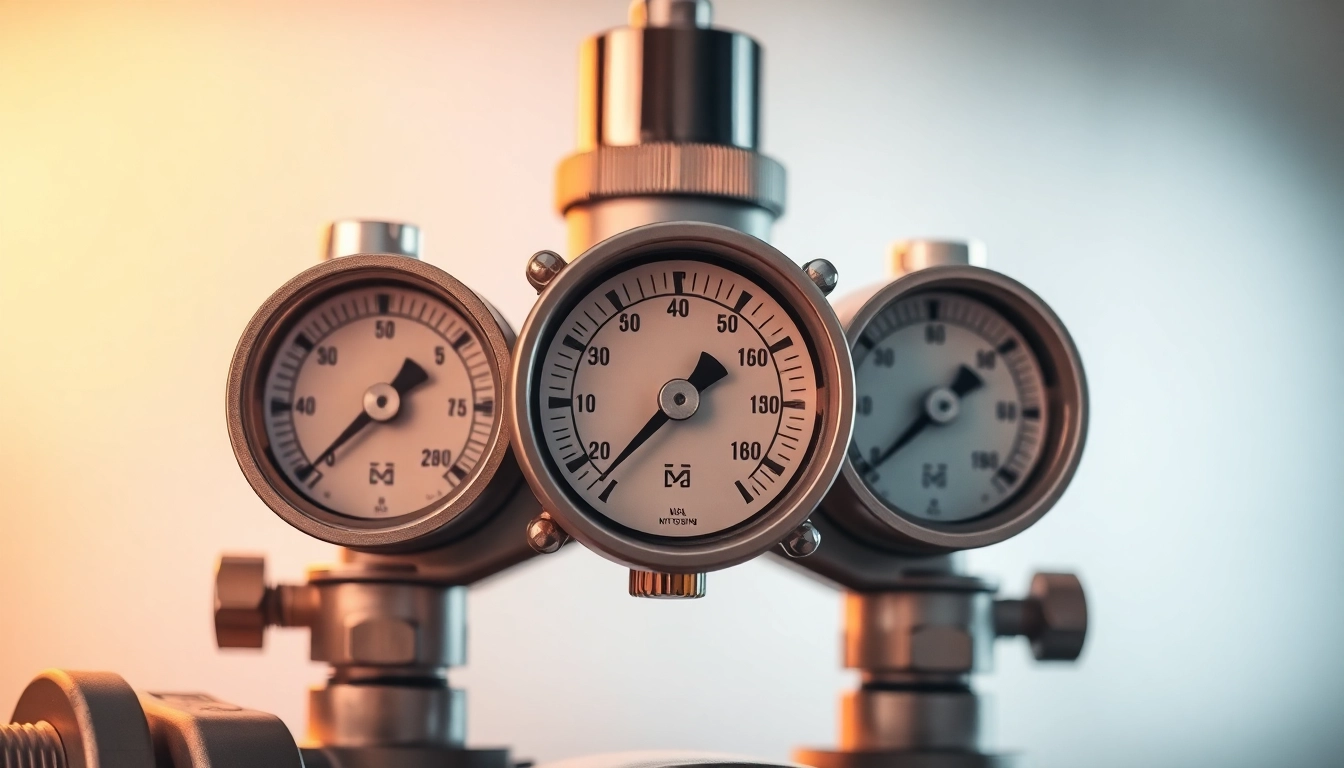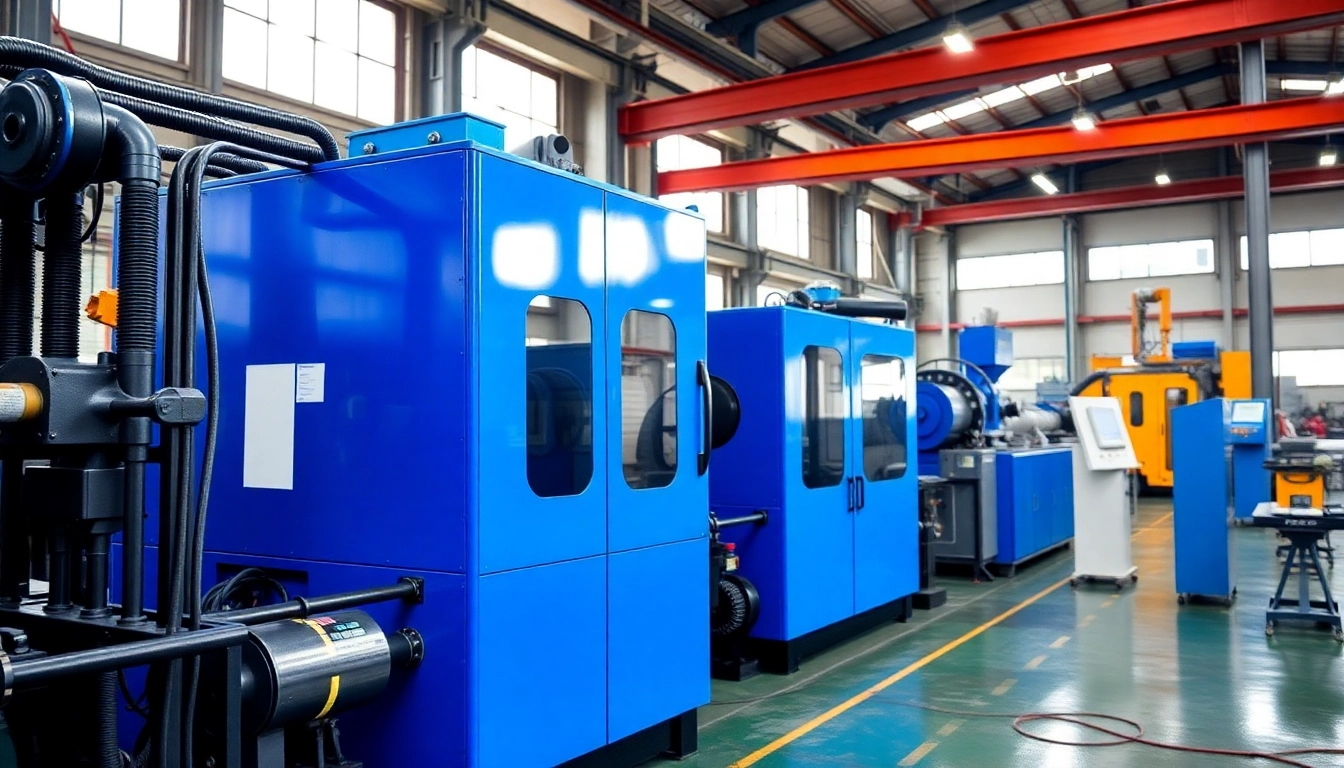Nitrogen Regulator Basics
What is a Nitrogen Regulator?
A nitrogen regulator is a device that regulates the pressure of nitrogen gas flowing from a storage cylinder to various applications. Its primary function is to reduce the high pressure of nitrogen from the cylinder to a stable, usable level for specific applications. This device is crucial in many industries, including food and beverage, pharmaceuticals, and welding, where consistent pressure is required for safe operation.
How Nitrogen Regulators Function
Nitrogen regulators function by controlling the flow rate and pressure of nitrogen gas through a combination of valves, springs, and diaphragms. When nitrogen gas leaves the high-pressure storage tank, it can be at pressures up to 2500 PSI (173 Bar). The regulator reduces this pressure to a lower, more manageable level (typically below 100 PSI) that can be used effectively. The regulator has an inlet connection that attaches to the gas cylinder and an outlet connection to distribute the gas to its intended use.
Applications for Nitrogen Regulators
Nitrogen regulators have varied applications across numerous industries:
- Food and Beverage: Used for nitrogenation in beverages and in preserving food by creating a non-reactive atmosphere.
- Welding: Helps in shielding the welding area from oxidation and contamination.
- HVAC and Refrigeration: Employed in pressure testing and system maintenance.
- Pharmaceuticals: Used in lab settings and manufacturing processes to provide an inert gas atmosphere.
- Electronics Manufacturing: Controls environments during sensitive component manufacturing.
Choosing the Right Nitrogen Regulator
Factors to Consider
Selecting the right nitrogen regulator involves several critical factors:
- Pressure Rating: Ensure that the regulator can handle the required inlet and outlet pressures for your specific application.
- Flow Rate: Evaluate the required flow rate for your application to select a regulator that can meet those demands.
- Connection Type: Different applications may require specific inlet and outlet connections; compatibility is crucial.
- Materials: The materials used in the regulator construction should be compatible with nitrogen and any other substances it may encounter.
Common Mistakes When Selecting
Several common mistakes can occur when selecting a nitrogen regulator:
- Ignoring pressure ratings – Selecting a regulator with inadequate ratings can result in malfunction or safety hazards.
- Overlooking compatibility with applications – Make sure the regulator matches the requirements of specific applications.
- Neglecting to consider environmental factors – Regulators should be selected based on anticipated operating conditions such as temperature and humidity.
Factoring Pressure Ratings
Understanding pressure ratings is crucial when selecting a nitrogen regulator. Pressure ratings define how much pressure the regulator can safely reduce. It’s important to look at both the inlet pressure (the pressure within the nitrogen cylinder) and the desired outlet pressure. Most applications will demand an outlet pressure that is significantly lower than the inlet pressure to ensure safe and effective operation.
Installing Your Nitrogen Regulator
Step-by-Step Installation Guide
Installing a nitrogen regulator is a straightforward process. Here is a step-by-step guide:
- Gather your tools and safety equipment. You will need a wrench, a pressure gauge, and personal protective equipment (PPE).
- Prepare the nitrogen cylinder by ensuring it is securely mounted and that all valves are closed.
- Attach the regulator to the nitrogen cylinder. Ensure that the threads of the inlet connection are clean and apply thread sealing tape if needed.
- Tighten the connection carefully with a wrench, ensuring not to overtighten as it could damage the threads.
- Connect the outlet of the regulator to your application using the appropriate fitting.
- Open the cylinder valve slowly while observing the pressure gauge to ensure it’s functioning correctly.
- Test the regulator by adjusting the pressures as required for your application.
Safety Precautions During Installation
When installing a nitrogen regulator, safety is paramount:
- Wear appropriate PPE, including gloves and eye protection.
- Always ensure the cylinder is securely placed to prevent falling.
- Never attempt to connect or disconnect the regulator while the cylinder is open.
- Be aware of your surroundings and ensure that there are no flammable materials nearby.
Testing and Troubleshooting
After installation, it is crucial to test the nitrogen regulator:
- Check for leaks by applying a soap solution to all connections and looking for bubbles.
- Test the output pressure with a gauge to ensure it matches the desired settings.
- Observe the regulator for any unusual noises or vibrations during operation.
If issues arise, consult the troubleshooting section of the manufacturer’s manual for solutions or contact a professional for assistance.
Maintenance of Nitrogen Regulators
Regular Maintenance Practices
To extend the life of your nitrogen regulator and ensure optimal performance, regular maintenance is essential:
- Clean the regulator and area around it to prevent dust and debris from entering.
- Inspect the regulator for visible wear or damage regularly.
- Lubricate moving parts per the manufacturer’s recommendations.
- Test pressures periodically to ensure the regulator is functioning as expected.
Signs of Wear and When to Replace
Identifying signs of wear early can prevent failures:
- Inconsistent pressure readings are often a sign of a malfunctioning regulator.
- Visible physical damage such as cracks or dents can indicate a need for replacement.
- Corrosion on metal parts can compromise safety; regulators showing signs of rust should be replaced immediately.
Cleaning Tips for Longevity
Regular cleaning can significantly enhance the lifespan of your nitrogen regulator:
- Use a soft, lint-free cloth to wipe down surfaces regularly.
- For tougher grime, use a mild solvent that is safe on the materials of the regulator.
- Avoid using abrasive materials that can scratch or damage the regulator’s finish.
Advanced Features to Look For
Digital vs. Analog Nitrogen Regulators
When evaluating nitrogen regulators, one key consideration is the type of display:
- Digital Regulators: Offer precise readouts and often come with advanced features such as programmable settings for specific applications.
- Analog Regulators: Generally simpler and may be favored for their reliability and ease of use, though they lack the precision of digital models.
Smart Technologies in Regulators
Emerging smart technologies are reshaping nitrogen regulation:
- Some modern regulators come equipped with sensors that monitor pressure levels and alert users to any anomalies via smartphone applications.
- Data logging features allow for monitoring trends over time, which can be valuable for predictive maintenance.
Pressure Control Features
Advanced pressure control options enhance functionality:
- Integrated pressure switches help automate shut-off or adjustments based on pre-set limits.
- Dual-stage regulators can offer more consistent output pressure across varying inlet pressures, making them ideal for sensitive applications.



